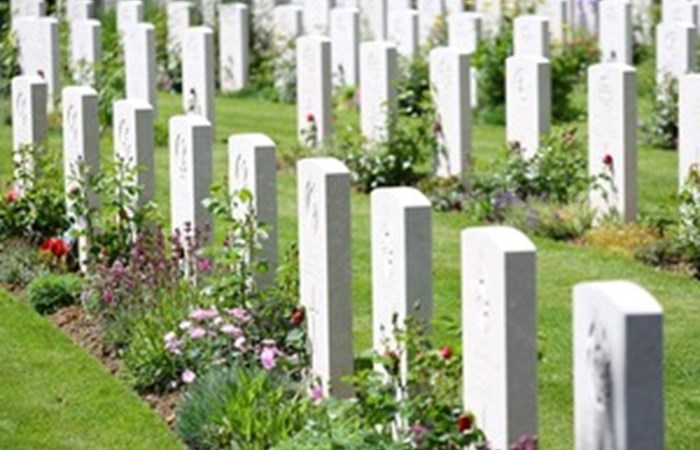Ministry Of Defence

Bayeux War Cemetery is the largest Commonwealth War Graves Commission war cemetery of the Second World War in France. It contains the graves of men originally buried on the battlefields and those who died in military hospitals in Bayeux.
The cemetery was started during the war by the 48th Graves Concentration Unit - a unit of the British Army responsible for recovering, identifying and burying the dead.
The cemetery was completed in 1952 and is now the final resting place of more than 4,100 Commonwealth servicemen, of whom nearly 340 remain unidentified. Also buried there are some 500 servicemen of other nations.
Opposite the cemetery stands the Bayeux Memorial, which bears the names of more than 1,800 men and women of the Commonwealth land forces who fell during Operation Overlord and have no known grave.
They died during the landings, the intense fighting in Normandy, and in the advance to the River Seine in August 1944. Both the cemetery and the memorial were designed by Philip Hepworth.
The Latin inscription on the memorial recalls the Norman invasion of Britain in 1066 and reads: We, once conquered by William, have now set free the Conquerors native land.
Both the cemetery and memorial are cared for by the Commonwealth War Graves Commission, whose mission is to ensure those who died in service or as a result of conflict are commemorated so that they, and the human cost of war, are remembered for ever.
Veterans of D-Day will gather at the cemetery in June 2024 to pay respects to their fallen comrades who now lie at rest there. The cemetery is open daily and all are welcome.
The positions of the 18 CWGC war cemeteries in Normandy give an indication of the progress of the fighting following D-Day and its human cost.
There are more than 22,000 Commonwealth war dead buried in these cemeteries, but many more will be found in churchyards and village cemeteries throughout the region.
Visit the Commonwealth War Graves Commission website to find out more a
